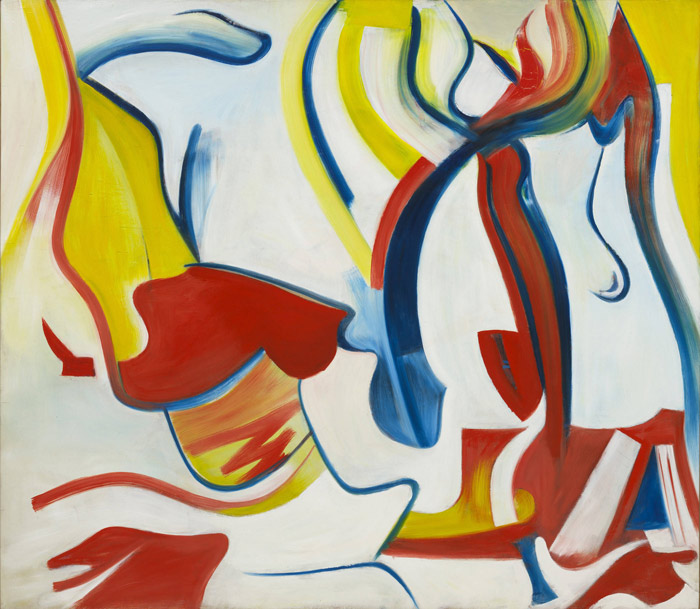|
There is no doubt that Willem de Kooning (l904-l997) is one of the most significant artists of the New York School. In this exhibition that will continue through January 12, 2012 at the Museum of Modern Art of almost 200 works within seven decades of the artist’s development the viewer can certainly agree with the curator John Elderfield that “de Kooning opened radical options for painting that ask us to reconsider how its modernist history should be told.” Here is an artist who worked not only in painting but also on drawings, prints, sculptures and created unusual works on paper. He is an artist who made statements about art that were always forceful and provocative. |
|
“His late works, which some thought little of, are actually complex compositions suggesting figures that sway in foliage blown by the wind.”
Willem de Kooning, Rider (Untitled VII), 1985. Oil on canvas, 70″ x 6′ 8″ in. Courtesy of The Museum of Modern Art, New York. Purchase and gift of Milly and Arnold Glimcher
Willem de Kooning Re-Writes Modernism at MoMA
Harriet Zinnes
There is no doubt that Willem de Kooning (l904-l997) is one of the most significant artists of the New York School. In this exhibition that will continue through January 12, 2012 at the Museum of Modern Art of almost 200 works within seven decades of the artist’s development the viewer can certainly agree with the curator John Elderfield that “de Kooning opened radical options for painting that ask us to reconsider how its modernist history should be told.” Here is an artist who worked not only in painting but also on drawings, prints, sculptures and created unusual works on paper. He is an artist who made statements about art that were always forceful and provocative. In 1949, for instance, he declared that “flesh was the reason why oil painting was invented.” And he believed in change in art, its constant new refinements. “Art,” he said, “should not have to be a certain way.” And in these seven decades of the artist’s work, by way of seven galleries, it is clear that his art is not done only in one way. Abstraction sits side by side with figuration, and both are glowing art. Consider, for example, his “Pink Angels” (1945).
De Kooning, was an artist who at age 12, could paint a still life in Rotterdam and as a teenager working in a commercial design firm, learned such techniques as tracing, copying, and layering. But he left Rotterdam for the United States in 1926-actually by stowing away on a freighter. He was a prolific artist, one whose change of scenery naturally changed his art. Evidenced in his tranquil work of the late l950s, disturbing women paintings, and bronze sculptures such as “Cross-Legged Figure” of l972. And then there are the spare paintings of the 1980s, with large areas of whites, narrow bands and thin lines and shadowy figuration. The last paintings in the exhibition were done when the artist was suffering from Alzheimer’s disease, an ailment that took his life in 1997. His late works, which some thought little of, are actually complex compositions suggesting figures that sway in foliage blown by the wind.

























